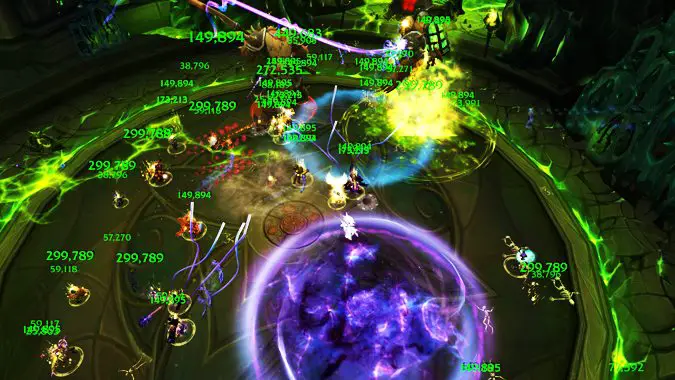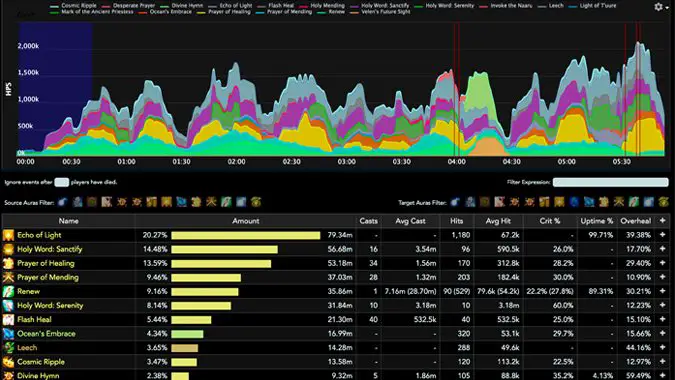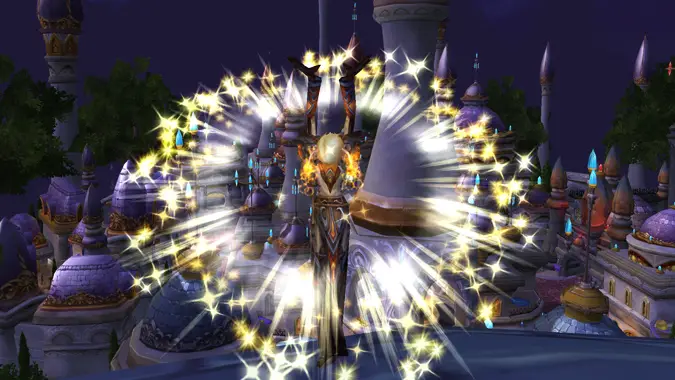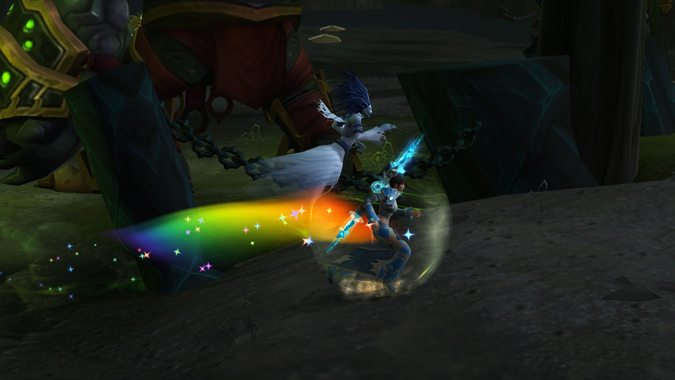Spiritual Guidance: Evaluating logs as a healing priest

One of the best ways of analyzing your performance is by going through combat logs. Most guilds these days use the combat log to upload to Warcraft Logs, where it spits out nearly every bit of data you could imagine. Even if your guild isn’t running logs, a lot of players will collect the data with private logging that they can go back through later.
There are also a couple log analyzer sites like WoW Analyzer and Check My WoW — these can be helpful to get a cursory overview, but you also want to take them with a grain of salt. Healing can sometimes be more “feelycraft” than theorycraft, and what the log analyzer thinks you should do isn’t always optimal at that moment. They are getting better, though, and they’ll at least give you a starting point.
But the best way is to do it yourself. When you know what to look for, it becomes second nature when trying to change your play.

Why you want to look at logs
Looking at and analyzing your logs can help you become a better healer. It helps you find weaknesses or areas of improvement, and it allows you to take an analytical approach outside the heat of the moment of the fight. One of the best ways to look at logs is to compare yours with logs from other Priests of your spec. Comparing against higher-level healers will show you what you’re doing different, but you don’t want to compare straight numbers because their gear will obviously give them better heals. You also want to take note of raid composition and find logs similar to your own raid so that you can learn what to do with similar classes.
Like any tool, logs can also be abused. It’s not good or bad per se, but there are good and bad ways of using them and their usefulness lies in how you use and interpret them. There are pitfalls with looking at logs, especially if taken at face value. Causation is not always obvious on the surface. A lot of times you have to delve within the logs to find the reason something is happening. At first glance, low healing per second may just look like the result of a bad healer. But a lot of things can contribute to low healing — like having too many healers in the fight, heal-sniping by faster healers, or just plain spell mismanagement.

Parses can be misleading
One thing you’ll commonly hear about is parses or rankings. These are a measure of pride and competition for DPS classes, but they don’t really apply well to healers. Unlike DPS, whose entire goal is to do as much damage to the boss as possible, healing is a zero-sum game. You can always damage the boss further, and your damage usually doesn’t prevent someone else from doing damage as well. But there’s only so much healing that can be done to someone. Once they’re topped off, your healing is null.
Parses, like logs, are merely a point of data, but focusing too much on ranking and not enough on playing with your team can promote unhealthy habits. If your raid is doing everything correct and they’re taking minimal unavoidable damage, there just won’t be that much healing to be had. Perfect play leads to low parses, but so does overhealing with too many healers. We used to joke that if your healers were getting high parses, then your raid was doing something very wrong. When things go to hell during a fight, your healing goes up. Or sometimes it’s the result of cheesing the fight — for example, if a raid team were to only let the Restoration Druid heal on Ultraxion while making the other healers stand there, so that he could get the best healing parse (yes, that actually happened once in my old raid).
Now, that’s not to say that parses are wholly bad and that you shouldn’t ever strive to get good ones. If you’re ranking low but your raid is killing things perfectly fine, then you can continue as you are — though it’s always worth it to analyze your spell usage and buff uptime for personal growth. If no one’s dying and you have plenty of healing, you can even cut a healer. But if your parses are low and your raid is having trouble or dying, then it’s worth it to look at what other, higher-parsing Priests in a similar item level and raid comp are doing.

Holy log tips
The main thing when looking at logs for Holy is making sure your spell usage is right and you have good uptime on buffs. Look at Renew and try to minimize hard-casting it — they should be passive from Benediction unless you’re moving. Make sure Prayer of Mending is cast on cooldown. Look at your Holy Word usage and see if they are cast close to on cooldown. You don’t want to waste them if there’s no healing to be done, but you also don’t want to keep saving them for “just in case.” More efficient Holy Words will save mana and keep Divinity up, increasing your healing.
Divine Hymn, your main emergency cooldown, is tricky. You want to use it during the worst damage but you also want to use it multiple times in a fight for maximum efficiency. If you’re working with an organized guild group rather than PUGs, oftentimes your Divine Hymn is scripted to be in a set spot and/or only used once with no time to use it again.
This is probably out of your hands, unless you can show that it’s not optimal and convince the raid leader to move it. If not, make sure you’ve set it up properly to be as powerful as possible — i.e. pre-cast Prayer of Mending to jump around via Renew the Faith and use a Holy Word right before using Divine Hymn so Divinity will boost its healing. Bonus points if your Holy Word procs T’uure, though this is more on RNG.

There are also other things to look at to see how your stats are working. Our Mastery is great, but is prone to overhealing due to a variety of reasons: too much Mastery, too many healers topping players off — which causes your Echo of Light HOT to overheal — or bad spell usage like using Prayer of Healing to top off players with only a little damage. Mastery at 40% is generally the recommended amount for Heroic, though at Mythic you’ll obviously end up with a bit more due to higher stats. If your Echo is overhealing more than half the time, it may be time to look at switching out some of that Mastery for other stats.

Discipline log tips
Discipline is all about those damage patterns and timing everything right. You can use the logs to pull up damage charts and your corresponding healing charts — they should mimic each other, and your healing should line up with the damage going out. As always, check your overhealing. Are you timing your abilities properly? Being off will cause your Atonement healing to turn into straight overhealing if it hits before the damage actually goes out.
Timing of spells is important and you want to look to see if you’re casting your cooldowns as soon as they’re available. Light’s Wrath will be a 1.5 minutes apart, Mindbender is 1 minute, and Evangelism is 1.25 minutes. If there’s consistent damage going out, you want to use them as close to on cooldown as possible. Some fights have a large burst of damage every minute, which means you’d want to alternate your cooldowns to get all of them, while some have burst windows that match up perfectly with your spells (e.g., Harjatan).

Likewise, you can check your Atonement casting and see if you have your Atonements set up before your healing cooldowns go out. During the fight, it can be easy to lose track of how many Atonements you have out or if you’ve missed any. Looking at your logs later, you can count how many and see if you can do better next time. Look at your mana as well. It’s a finite resource, and you want to make the most of it — ending the fight with half your mana is that much more healing that you missed out on. You don’t have to heal when nothing’s happening, but you can look at ways to be more efficient.
Other things to pay attention to are Power Word: Radiance casts, if you start to pre-cast enough time before damage goes out, the amount of Pleas you hard cast or have paired with Radiance for maximum Atonement, pairing Mindbender with Evangelism or Light’s Wrath for most effective bursts, whether you’re cutting Atonement by refreshing early, keeping your DOT up, and keeping up your Power Word: Shield up or on the tanks.

You don’t have to tackle these all at once. The log analyzer sites are a good start to point you in the right direction and help you figure out what matters most in your logs. Or if you want personal help, the class or role Discords usually have some sort of log help or review channel set up to ask questions. Once you get a good basis, you can then tailor it to your own logs. It’s a daunting task, but it’s definitely worth it in the end.
Please consider supporting our Patreon!
Join the Discussion
Blizzard Watch is a safe space for all readers. By leaving comments on this site you agree to follow our commenting and community guidelines.




